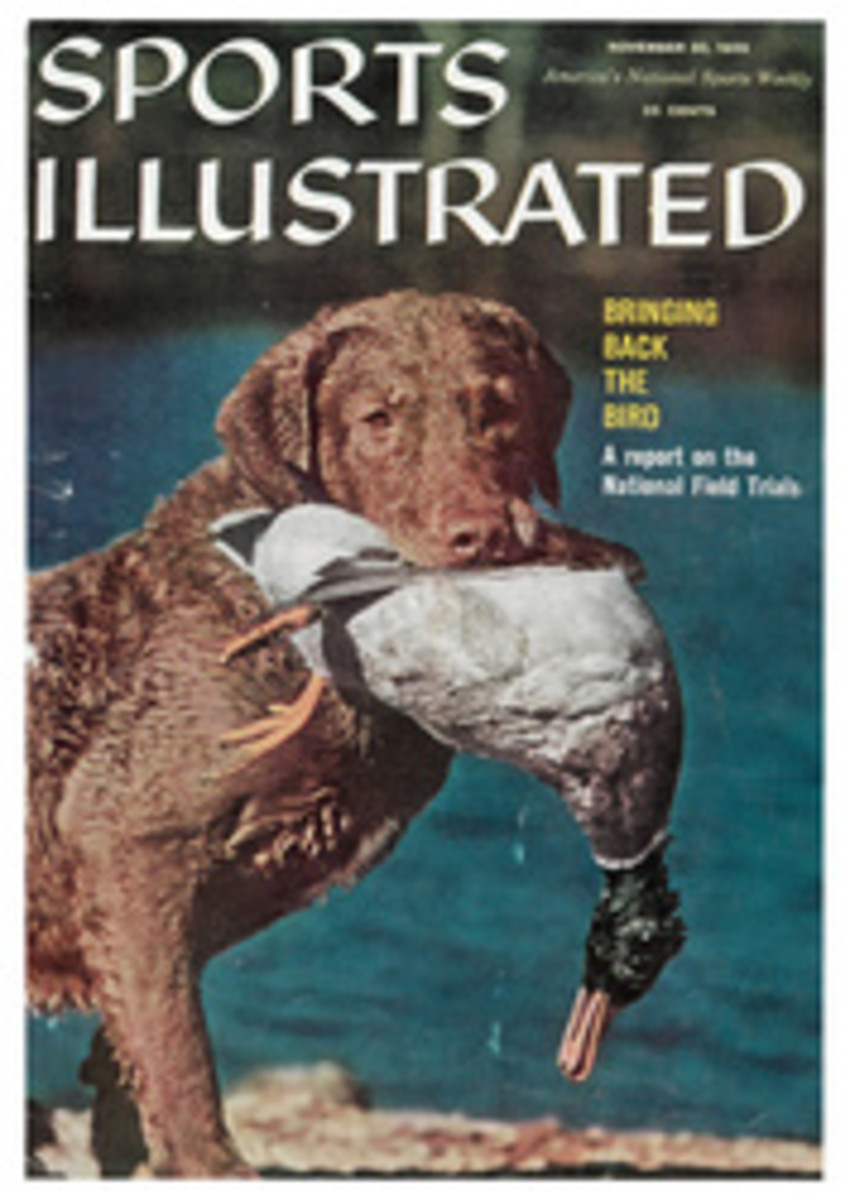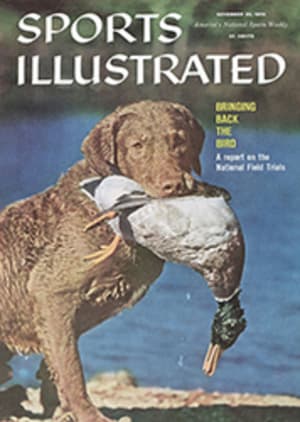
Home-town Boy Makes Good
On the outskirts of Melbourne, close along the eastern shore of Port Phillip Bay, lies a stretch of land the Australians call "the sand belt." For quite a few decades now, foreign golfers visiting this faraway continent have left with the impression that the sand belt may well be the finest sweep of natural golf country in the world, superior even to the famous reach of linksland east of Edinburgh. The unique quality of the belt is that the sand and black soil fuse in an unusual mixture that is perfect for growing good golf grass, particularly couch grass, a member of the Bermuda family that was meant to be used for fairways.
The sand belt is loaded with first-class golf courses, nearly two dozen of them. One of the best is Royal Melbourne, and it was there last week that the seventh Canada Cup match was held and won most fittingly, and by the wide margin of 10 shots, by the Australian team of Peter Thomson and Kel Nagle. Until late in the fourth and final round, when the strain he was under began to tell on his putting, it looked as if Thomson would also carry off individual honors for the tournament. He ultimately finished deadlocked at 275 with Stan Leonard of Canada and lost the playoff on the first extra hole when he pulled his approach to the left of the green and failed to match Leonard's par 4. It is a rather bizarre coincidence that back in 1954, when Thomson and Nagle captured the second Canada Cup match at Laval-Sur-le-Lac in Montreal, Leonard won the individual trophy.
Far and away the most important part of these international meetings, however, is the team match. It is not too complicated an affair, really, but it always seems a good idea to spell out how it works, since it produces a breed of figures that are somewhat off the regular golf beat and can make the scoring sound much more mysterious than it actually is. In brief, each competing country—there were 30 this year including Indonesia, a new entry—is represented by two professionals, and the country's final score is the sum of the two players' individual scores for the four days of play. For illustrations, in this year's competition Australia's winning total of 563 was compounded from Thomson's 67-69-68-71—275 and Nagle's 70-70-76-72—288.
It is a format that can be exciting, for should both players suddenly go sour the team can lose an awful lot of strokes in a hurry. On the second day at Royal Melbourne, to cite a not untypical example, the Welsh team of Dai Rees and David Thomas, well up in the running, was in excellent order after 13 holes. Rees was 1 under par and Thomas 2 under. On the 14th, a 452-yard par 4 combining a blind drive, a sharp break to the right and a green tucked behind long traps, Rees took a six and Thomas a seven, and where the Welsh pair had been 3 under, they were abruptly 2 over. "Chyenged the whole shipe of their dye's work," one Australian spectator commented.
However, in this particular edition of the Canada Cup, there was not really one moment when it looked as if anyone but Australia would win. On the first day, with Nagle equaling par with a 70 and Thomson around in 67, their 137 gave them a seven-shot lead over Canada (Leonard and Al Balding), South Africa (Gary Player and Harold Henning) and Wales, and an eight-shot lead over the American team of Sam Snead and Cary Middlecoff. On the second round, when Nagle added another 70 and Thomson a 69, Australia held its margin over Canada, despite Leonard's brilliant 66, and picked up one more shot on the United States. On that fine Australian spring day Snead was in great form. Hitting the small, resilient British ball a mile and putting as he rarely has, even in his television conquests—he one-putted 10 of the last 12 greens and holed four very long ones—Sam brought in a 65, his lowest round in an important competition in years. This might have made a dent in the Australians' lead if Middlecoff had managed a fairly good round, but Cary, still struggling with his game as he had in the Ryder Cup matches, threw away a fine start by taking 42 shots on the back side for a 75. It takes some believing, but an 18-footer, which he dropped for his par on the 12th, was all that saved Cary from a run of six consecutive bogeys. Not that bogeys were especially hard to come by at Royal Melbourne. For the Canada Cup matches a composite course was used—12 holes from the club's east course and six from the west. The best way to introduce the quality and difficulty of the holes is to mention that they are the work of Alister Mackenzie, the extremely gifted Scottish golf architect, who built them in the late 1920s shortly before he came to the U.S. to assist Bobby Jones in designing the Augusta National. The greens at Royal Melbourne are Augusta-sized and severely trapped, and the course puts a much sterner premium on accurate driving than Augusta does. Many of the holes are sharply dog-legged, and all of them are bordered with rough which is thick with tea trees, gums and firs, a nice sample of the flora of the bush country.
To return to the progress of the Canada Cup play, on the third day, when it was now or never for the contenders, Canada could make up no strokes on Australia and the U.S. lost four more to fall 13 off the pace. Barring a complete collapse by Nagle and Thomson, which the tightness of their play on the final day never suggested for a second, the only aspect of the team match that remained to be determined was who would finish second. The U.S. finally did, a birdie by Middlecoff on the 17th and one by Snead on the 18th enabling both of them to bring it around in 70 and to edge Canada's total by a shot.
The solid Australian victory, witnessed by some 50,000 prideful supporters over the four days, lends itself to several species of analysis. It could be argued, for instance, that it was Kel Nagle (backing Thomson) who made the difference by outplaying the other "second men" teamed with the four outstanding golfers in the field—Balding (backing Leonard), Middlecoff (backing Snead) and Henning (backing Player).
Nagle is the current Australian Open and PGA champion and has a notable record over the years, but for all that his method of play is unimpressive, and a visiting fireman gets the idea that the string that holds his swing together might snap at any moment. He addresses the ball off the toe of the club, and then, as he reaches out and places it behind the ball, darts quickly into his stroke. He pushed and hooked a number of tee shots and was thin with quite a few of his approaches, but whenever it looked like he was headed for real trouble, he invariably settled down and played steadily and well. Nagle has a beautiful, smooth putting stroke, and his work on the greens is the true glue of his game.
But the bulk of the credit for the Australian triumph should go, to be sure, to Peter Thomson who set it up with his three sub-par rounds. A compact and polished stylist who probably is the best hitter of the small ball in the world today, Thomson has been a national hero since 1954, when he won the first of his four British Opens. In Australia when anyone says "Peter," you can be reasonably sure he is referring to Thomson.
For all of the merit of Stan Leonard's victory in the individual championship—the Canadian war-horse has become a beautiful player—it was a pity in a way that Peter could not have made a clean sweep of the honors. It was his week. From a sports point of view, Australia is like one large home town, and each day of the Canada Cup nearly every eye was on Peter, hoping that he would rise to the considerable occasion when Australia was acting as host for the first time to a major international golf tournament. At the presentation ceremonies when he was congratulating Stan Leonard, Prime Minister Menzies added a very happy note the crowd loved when he turned to Thomson with a wide smile and told him, "I would say to you, Peter, what I have often said to my political opponents after an election: 'You shouldn't feel badly about this, for you were beaten by a very good man.' "
PHOTO
CURLY-HAIRED PETER THOMSON HOLDS CLUB HIGH IN TRIUMPH AS HE AND PARTNER KEL NAGLE WALK ALONG MELBOURNE FAIRWAY
PHOTO
INDIVIDUAL VICTOR Stan Leonard of Canada had been in the 19th hole after finishing early, came out cheerfully to beat Thomson in one-hole playoff.

